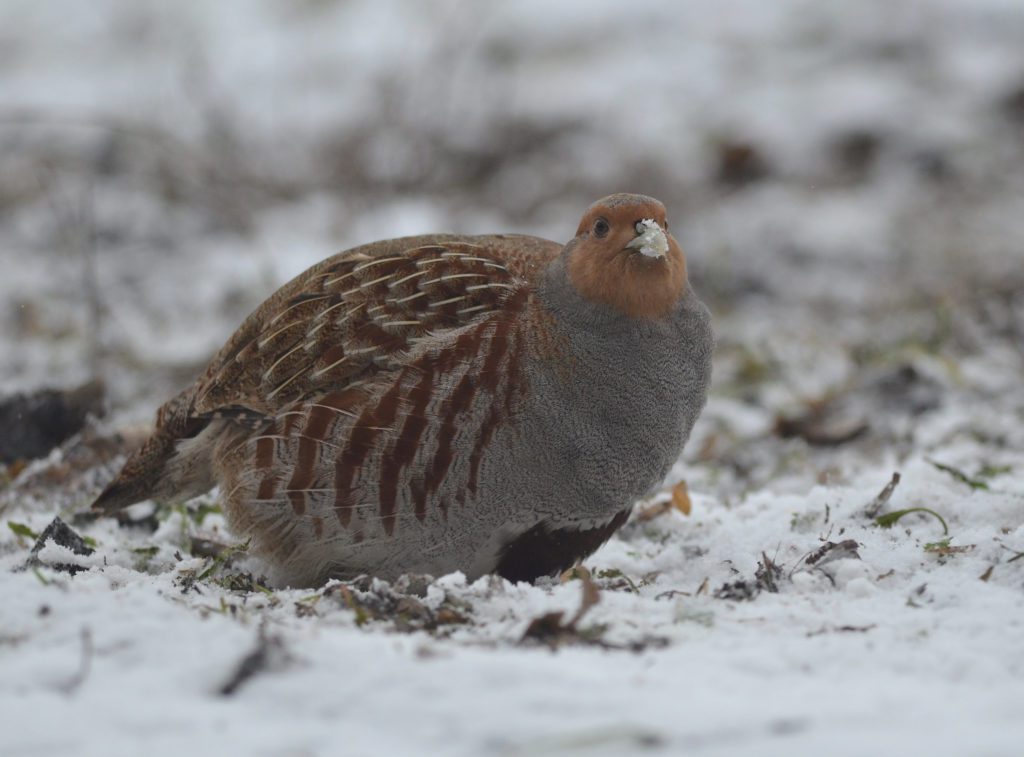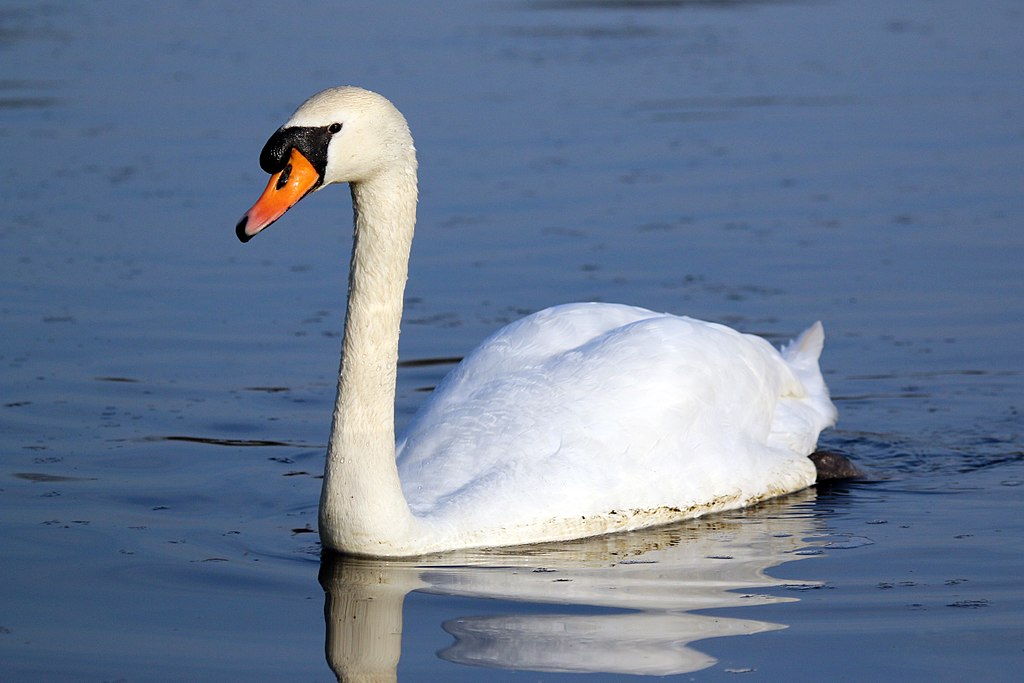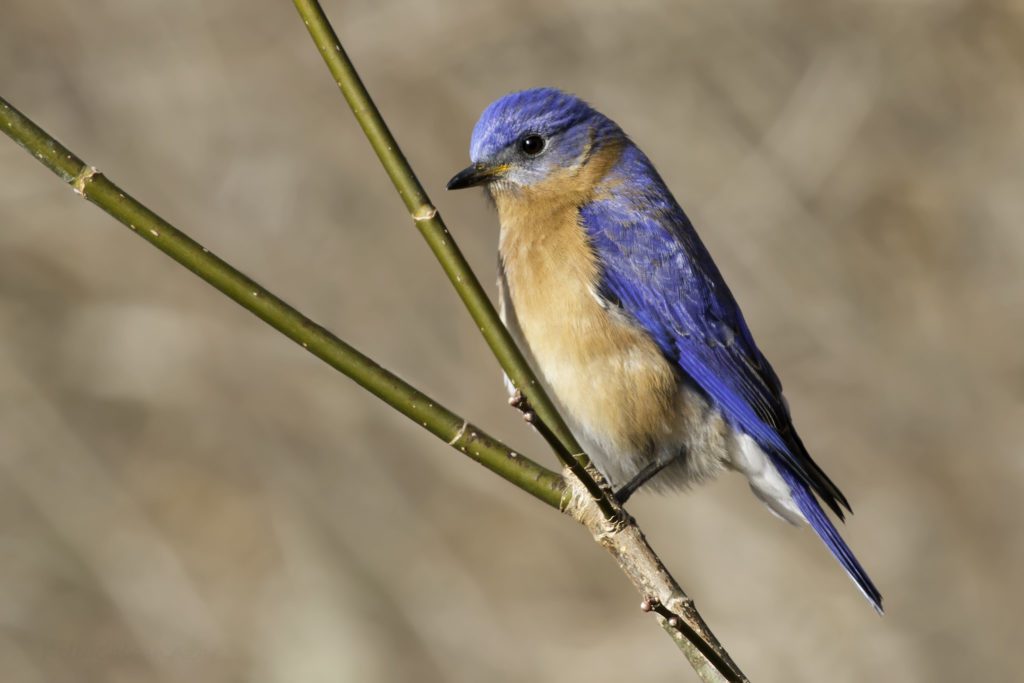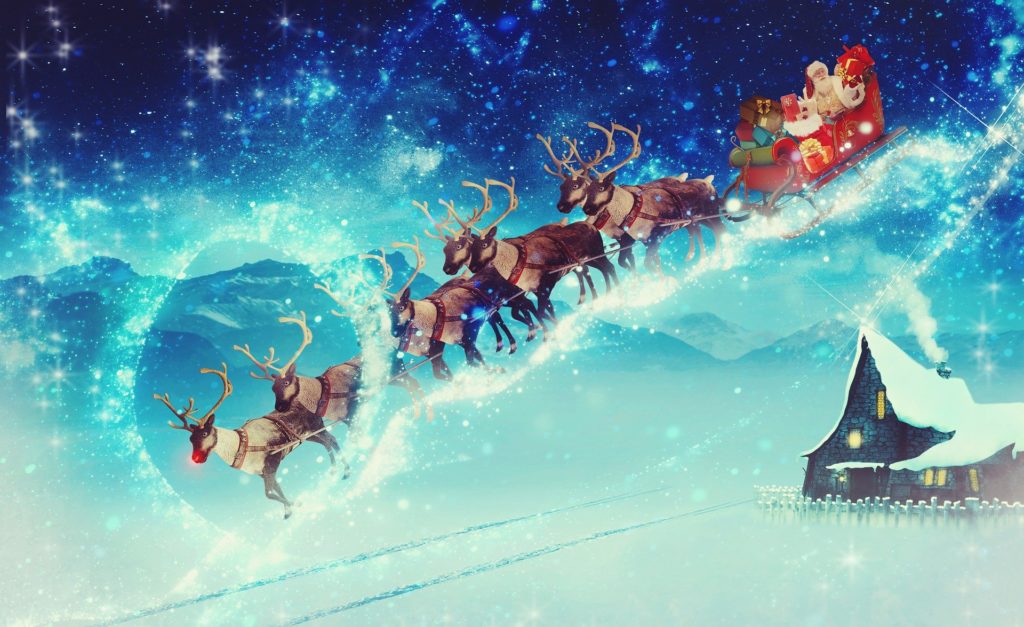by Shelby Wyzykowski
We all know Dasher and Dasher and Prancer and Vixen, Comet and Cupid and Donner and Blitzen. But do you recall the most famous reindeer of all? It’s Ruthie the red-nosed reindeer of course! No, that definitely does not sound quite right, does it. There is no Ruthie in the traditional song that we all know and love. The lead reindeer that guides Santa’s sleigh on that foggy Christmas Eve should be Rudolph, a boy, not Ruthie, a girl. Or so the song says. There are several widely known Christmas carols that incorporate animals into their lyrical stories. They are songs that many people know by heart and faithfully sing year after year. But have you ever taken the time to stop and really think about the ways in which wildlife are portrayed in these melodic tales? Are these stories scientifically accurate accounts that hold true to the realities of the natural world? Or are they simply lyrical flights of holiday fancy?
The Twelve Days of Christmas
“The Twelve Days of Christmas”, first published in England in 1780, is a carol that documents a very long list of gifts that a true love gives to their sweetheart over a period of twelve days. By the end of the ballad, the lucky giftee receives 184 birds, more than enough to open their own aviary. The large, feathered flock of six different avian species includes a partridge in a pear tree (twelve times over).

A partridge in a pear tree would not be the most ideal gift since, not only would gift wrapping be a challenge, but it might not be possible to find such a gift. Do partridges even roost in pear trees? Though the iconic image of a treed fowl paints a pretty yuletide picture, it is not a natural occurrence in the real world. In North America, two species of partridge introduced as game birds have well-established populations. The Gray Partridge (Perdix perdix), a native of Europe, can be found in northern prairies, where it roosts and forages mostly on the ground, at the bases of shrubs, and, during winter, on the snow. The Chukar Partridge (Alectoris chukar), a native of Eurasia, inhabits the arid American West, where it roosts beneath sagebrush, under juniper trees, in rock outcrops, or in open rocky areas. Not only do both species build their nests exclusively on the ground, they are also both primarily seed-eaters (but they do enjoy the occasional leaf or insect). So, pears as a food source are of no real interest to either type of partridge.

Among the many other birds this carol features are the “swans a-swimming”. If your beloved happens to be an avian enthusiast, the Mute Swan just could be the most fitting of gifts on the seventh day of Christmas. These birds have traditionally been associated with romance because of their graceful swimming and their long and beautifully curved S-shaped necks. They also mate for life, and paired couples tend to charmingly swim side by side. Native to Europe and parts of Asia, Mute Swans were brought to the United States as pond ornaments for private estates and have since gained a foothold in this country. Mute Swans, being very territorial, usually do not migrate and may be present at the same location all year round. They are very content living in icy cold weather if there is an abundant supply of food at hand. But can they swim in the blustery, inhospitable conditions of December, as this song claims? Surprisingly, the answer is yes. You would imagine that swimming in frigid waters would unmercifully freeze the feet of waterfowl, but swans and other waterfowl avoid this frosty fate by utilizing an intricate heat-exchange system called counter-current circulation. Through an intertwining of arteries and veins, the circulation system in the legs of these birds functions as a natural radiator. When arterial blood moving from the body to the feet passes alongside the venous blood returning from the feet to the body, heat is transferred from the warm arteries to the cool veins. This process keep’s the swan’s body at the right temperature while the extremities are still just warm enough to avoid tissue damage. There’s no doubt that if humans were gifted with this same circulatory trick, many a day of snow shoveling, and car cleaning would be made much more bearable!
Walking in a Winter Wonderland
One of the time-honored favorites of the season is “Walking in a Winter Wonderland,” the 1934 classic song about a couple’s romance during the holiday season. Though a snowman plays a prominent part in this tune, two types of bird are also mentioned.

The first is introduced into the musical story with the line “gone away is the bluebird.” This bluebird might symbolize the sadness that comes with being parted from a loved one. Or could it just literally mean that the songbird has left the wintry weather for warmer climes? Feathered with eye-catching plumage of bright azure and rust, the Eastern Bluebird (Sialia sialis) is found in many parts of our country during much of the year. However, as winter approaches, much of the population migrates to the southern U.S., with some members of the species flying as far south as Central America. Though they are occasionally seen in wintry weather, most do not return north again until February or March. So, if your own personal Winter Wonderland happens to be somewhere in the northern United States, the lyrics “gone away is the bluebird” are fairly accurate.
But what about the mysterious “new bird” that’s “here to stay” and sings a love song as the happy couple goes along? Some song aficionados suppose that the “new bird” represents the elation that two people share when starting their new life together. Others suggest that the unnamed bird is actually the stork, ready and waiting to eventually deliver a little bundle of joy. But storks cannot sing, can they? Well, no, not really. The Wood Stork is the only stork native to North America. It is a very large, heavy-billed bird that wades in the shallows of southern swamps, marshes, ponds, and lagoons. Adult storks are mostly silent except for the occasional hissing. They also can be heard bill clappering, which is when they make a loud, clattering sound by quickly opening and snapping shut their bills. But young storks do have a musical repertoire of sorts. Within stork breeding colonies, which are usually located in stands of tall cypress, nestlings will make a noisy ruckus as they beg for food. Their loud calls sound a bit nasally, kind of like a braying donkey. If the wood stork is in fact the “new bird”, his attempt at singing a love song would not be considered particularly romantic by many, unless you happen to be a lovesick donkey in search of a mate (as a side note, both male and female donkeys use bray vocalization during courtship).
Rudolph the Red-Nosed Reindeer

Now let’s get back to the catchy 1949 jingle about the gutsy hooved hero whose red nose saved Christmas. The surprising truth about “Rudolph the Red-Nosed Reindeer” is that these animals can actually have red noses! Reindeer have densely packed arrays of capillaries in their noses, which can sometimes cause them to appear pink. An excess flow of blood to their nose warms the air that they breathe in and can also help regulate their body temperature under extreme environmental conditions. To avoid overheating while running (or, in Rudolph’s case, flying) for long periods of time, large volumes of blood are brought to the nose where the excess heat can radiate out into the air.
Also, according to the song, male reindeers at the North Pole sport their antlers well into the darkest days of winter. But outside the boundaries of Santa’s domain, males begin to shed their antlers in late autumn after the fighting of rutting season has ended. Females retain their antlers well into the spring when their calves are born. Access to food is critical during their winter pregnancy, so they must use their antlers to defend patches of vegetation in small areas of cleared snow. Also, during the colder months, females are in better physical condition than males because they have much larger stores of energy. Females enter winter with about fifty percent body fat, whereas the fat percentage of males can dip as low as five percent. So, although there don’t seem to be any females helping to pull Santa’s heavy, gift-laden sleigh, rest assured that these ladies would be more than capable of taking on the task!
Natural History of Christmas Songs
So now we know the true story behind some of our favorite Christmas ditties. Storks don’t sing sweet songs of love. And you’ll never see a partridge anywhere near a pear tree, not at Christmas or at any other time of the year. Yet despite the scientific inaccuracies of these traditional holiday songs, we still unconditionally adore them for what they represent…the joyous and hopeful spirit of the season. But what about Rudolph? If the reindeer rules of winter favor females, how can we account for our red-nosed friend and all of the other males that make up Santa’s team? Well, perhaps we can attribute it to a little bit of Christmas magic at work. Maybe some seasonal miracle allows these reindeer to hang on to their antlers for just long enough so that they can take part in that worldwide flight on the big night. We can only guess, since it seems to be a closely guarded secret between Santa and his crew. They’re the only ones that know the whole story. But that’s okay, because, during the holiday season, do we always need to know why things happen the way that they happen? Probably not. Sometimes, it’s perfectly fine just to wonder and imagine and not know all the answers.
Because, sometimes, just believing is enough.
Shelby Wyzykowski is a Gallery Experience Presenter in CMNH’s Life Long Learning Department. Museum staff, volunteers, and interns are encouraged to blog about their unique experiences and knowledge gained from working at the museum.
Related Content
Are Santa’s Reindeer Real Mammals?
Carnegie Museum of Natural History Blog Citation Information
Blog author: Wyzykowski, ShelbyPublication date: December 13, 2021
